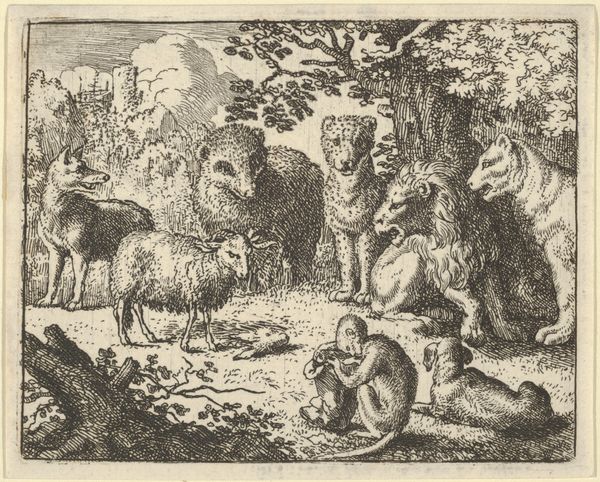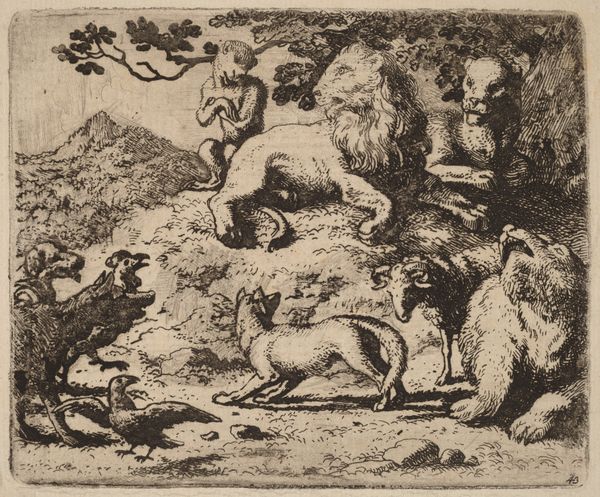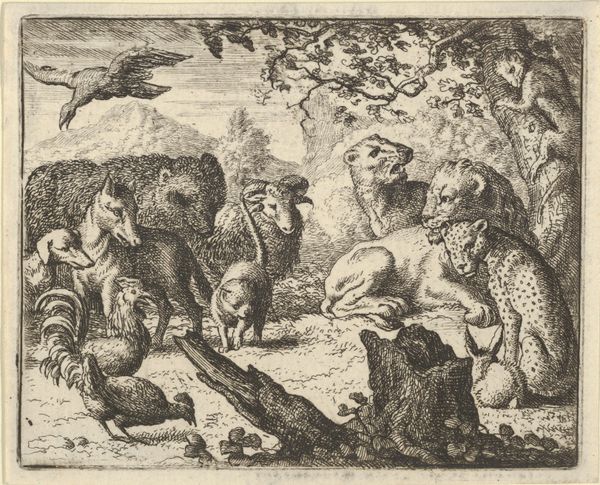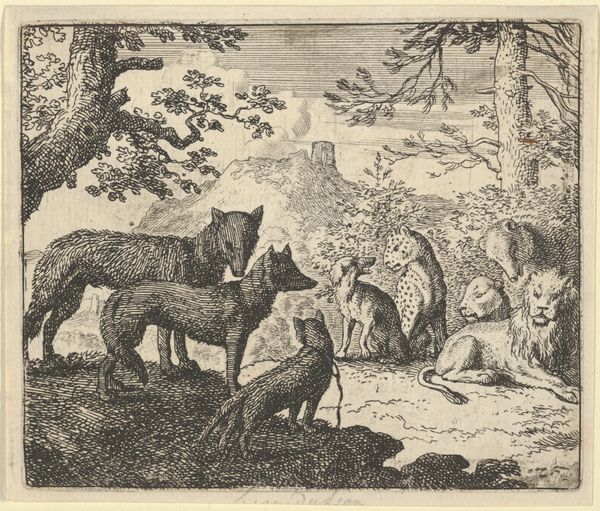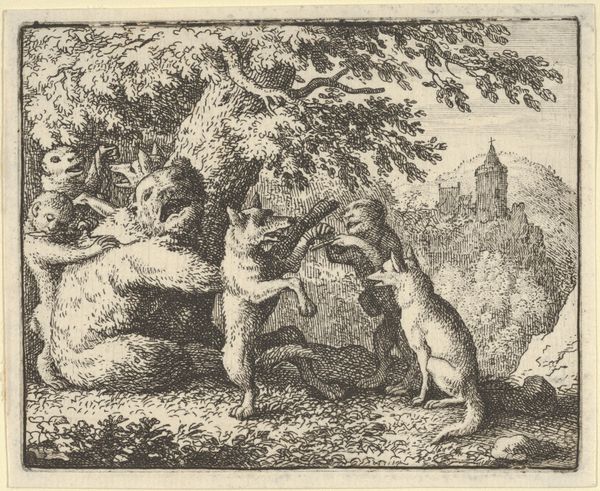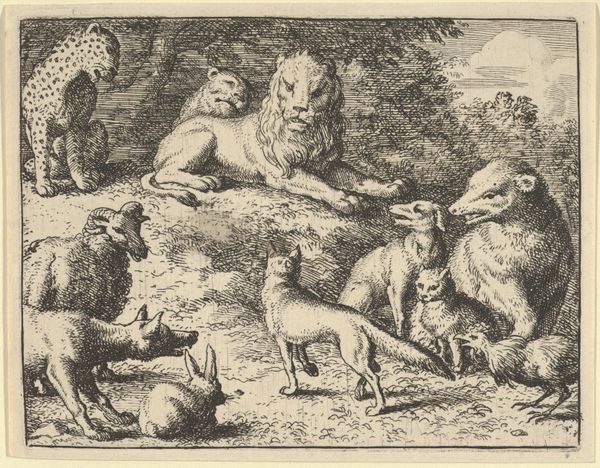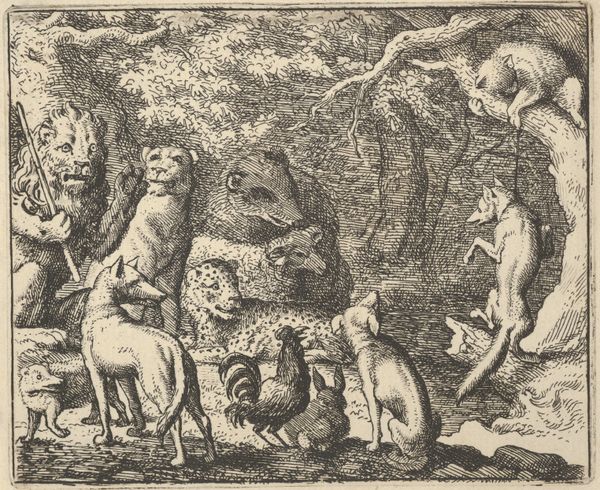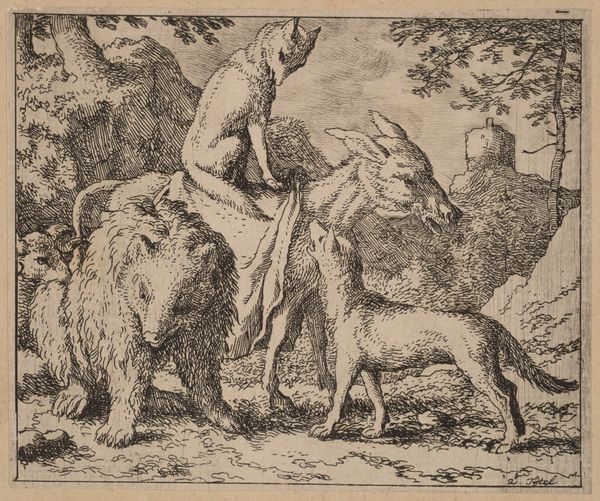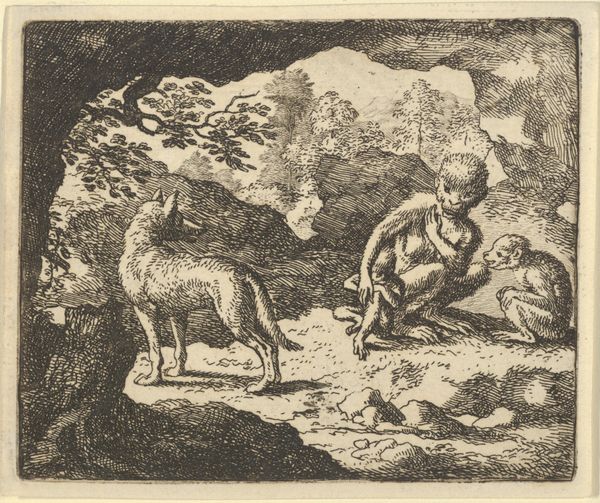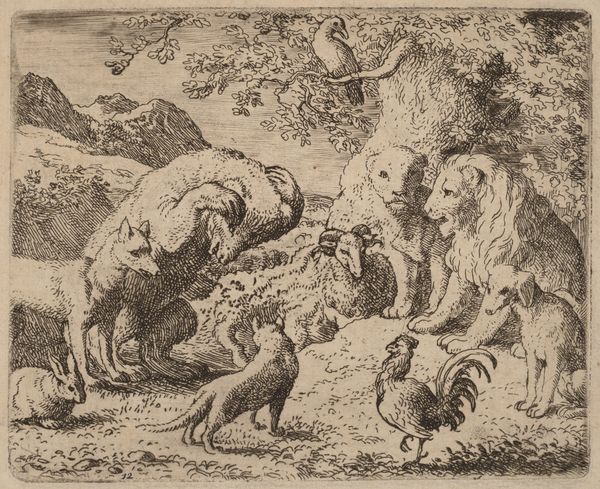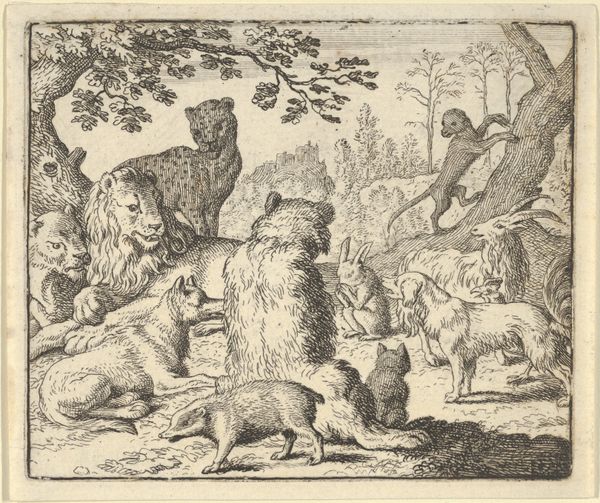
Renard Falsely Accuses His Father of Conspiring Against the Lion from Hendrick van Alcmar's Renard The Fox 1650 - 1675
0:00
0:00
drawing, print
#
drawing
#
ink drawing
#
pen drawing
#
mechanical pen drawing
# print
#
pen illustration
#
pen sketch
#
pencil sketch
#
old engraving style
#
bird
#
pen-ink sketch
#
pen work
#
pencil art
Dimensions: Plate: 3 5/8 × 4 1/2 in. (9.2 × 11.4 cm) Sheet: 3 15/16 × 4 3/4 in. (10 × 12.1 cm)
Copyright: Public Domain
Editor: Here we have Allart van Everdingen's print, "Renard Falsely Accuses His Father of Conspiring Against the Lion from Hendrick van Alcmar's Renard The Fox", created sometime between 1650 and 1675. The composition, rendered with fine lines, creates this scene of courtly intrigue amongst animals that feels both whimsical and rather serious. How do we unpack the context of such a narrative? Curator: This image invites us to consider the political role of art. It's part of a series illustrating the popular medieval fable, Reynard the Fox, a narrative used to satirize courtly life and expose corruption within the feudal system. Consider how this print, likely reproduced and disseminated widely, could function as a form of social commentary. Do you think its audience saw it purely as entertainment, or as something more subversive? Editor: That’s fascinating! Subversive, definitely. The animals, especially Renard, embody cunning and deceit – qualities hardly absent from human courts. It makes you wonder who the audience was meant to identify with – the powerful but perhaps naive lion, or the wily fox? Curator: Exactly! And the choice of imagery itself is a statement. By representing human drama through animals, it creates a critical distance. This wasn't unique to this artwork or even this time. Animal allegories frequently served to mask direct criticism of authority. It allowed the artist, and by extension, the audience, to critique social structures without facing direct reprisal. Editor: So, it’s a political cartoon cleverly disguised as a children’s story. The dissemination through prints amplifies the potential for widespread critique too. Curator: Precisely. The print medium made this social critique accessible, turning art into a tool for potentially shaping public opinion and challenging the status quo, however subtly. Editor: It's incredible to think about how a simple-seeming animal tale could be a vehicle for such pointed commentary. Thanks, I now have a much richer understanding.
Comments
No comments
Be the first to comment and join the conversation on the ultimate creative platform.
